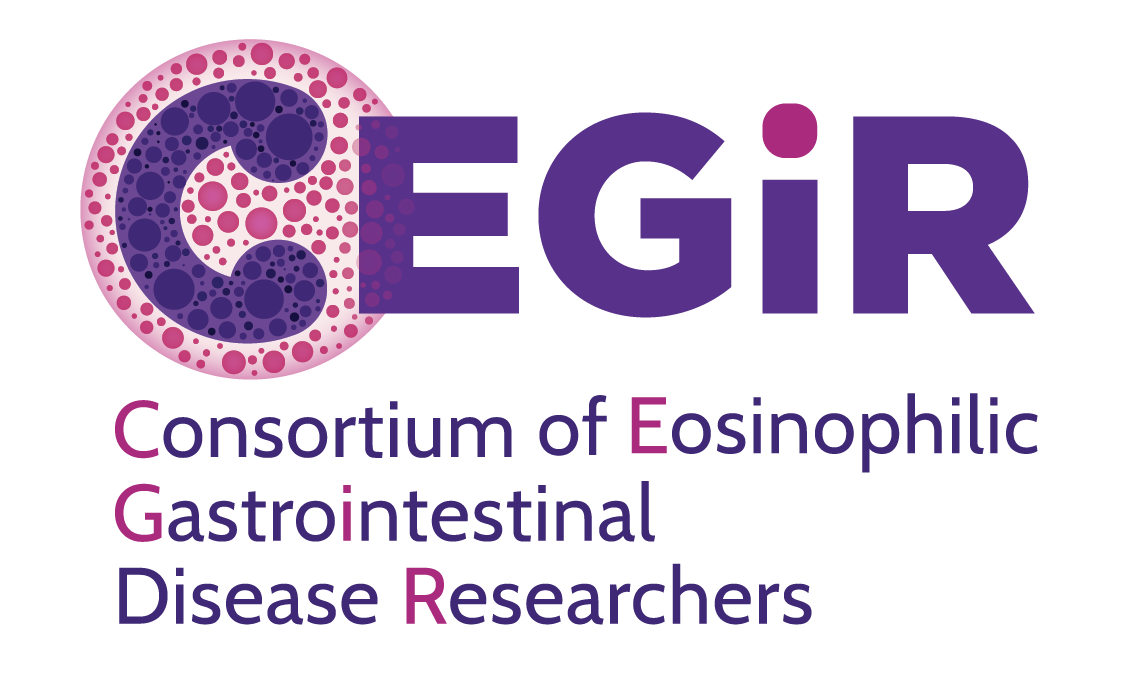Amanda B. Muir, MD
Title: Assistant Professor of Pediatrics
Affiliation: The Children’s Hospital of Philadelphia
Year entered into CEGIR training program: 2015
Mentor/s: Jonathan Spergel, MD, PhD; Hiro Nakagawa, MD, PhD
Biosketch
My clinical and research goal is to improve the lives of children with eosinophilic esophagitis and prevent the devastating consequences of esophageal fibrosis. Following my training in general pediatrics, my strong foundation in mucosal immunology led to a natural interest in pediatric gastroenterology. During my clinical fellowship year, my interactions with patients and families affected by EoE increased my dedication to increasing the medical community’s understanding of its underlying pathology. One complication, esophageal fibrosis predisposes patients to recurrent food impactions, emergent endoscopy, impaired esophageal motility, and esophageal stricture. I am currently looking for ways to diagnose and treat esophageal fibrosis prior to the onset of these complications.
Summary of current CEGIR projects
Dr. Muir’s project with CEGIR involves utilizing the new EndoFLIP® technology. Dr. Muir’s research will measure the amount of stretch (distensibility) of the esophagus, as it is believed that it may be a marker of early fibrosis in EoE. To measure this, a catheter with a balloon on the end is inserted into the esophagus during routine endoscopy. A sensor at the end of the catheter measures the diameter of the esophagus as well as the amount of pressure in the balloon as it is inflated. Her team plans to utilize the data from the study to establish the pediatric normal values for esophageal distensibility, and then evaluate the distensibility in patients with EoE and determine if it correlates with patient symptoms or with how tissue samples look when analyzed under a microscope.
Publications as affiliated with CEGIR
- Merves JF, Whelan KA, Benitez AJ, Muir AB, Furuta GT, Wang ML, Falk GW, Spergel JM, Nakagawa H. ATG7 gene expression as a novel tissue biomarker in Eosinophilic Esophagitis. Am J. Gastroentero. 2016 In press. NIHMS#: 749309
- Whelan KA, Merves JF, Giroux V, Tanaka K, Guo A, Chandramouleeswaran PM, Chang S, Benitez AJ, Dods K, Que J, Masterson JC, Fernando SD, Godwin BC, Klein-Szanto AJ, Chikwava K, Ruchelli ED, Hamilton KE, Muir AB, Wang ML, Furuta GT, Falk GW, Spergel JM, Nakagawa H. Autophagy mediates epithelial cytoprotection and redox homeostasis in Eosinophilic Esophagitis. Gut. 2017 Jul;66(7):1197-1207.
- Muir AB, Benitez AJ, Dods K, Spergel JM, Fillon SA. Microbiome and its impact on gastrointestinal atopy. Allergy. 2016 Sep;71(9):1256-63.
- Chandramouleeswaran PM, Shen D, Lee AJ, Benitez A, Dods K, Gambanga F, Wilkins BJ, Merves J, Noah Y, Toltzis S, Yearley JH, Spergel JM, Nakagawa H, Malefyt Rd, Muir AB*, Wang ML*. Preferential Secretion of Thymic Stromal Lymphopoietin (TSLP) by Terminally Differentiated Esophageal Epithelial Cells: Relevance to Eosinophilic Esophagitis (EoE). PLoS One. 2016 Mar 18;11(3):e0150968.
- Muir AB, Dods K, Henry SJ, Benitez AJ, Lee D, Whelan KA, DeMarshall M, Hammer DA, Falk G, Wells RG, Spergel JM, Nakagawa H, Wang ML. Eosinophilic esophagitis associated chemical and mechanical microenvironment shapes esophageal fibroblast behavior. J Pediatr Gastroenterol Nutr. 2015 Dec 30.
Q & A with Dr. Muir
How has CEGIR participation made a difference in your career, or how do you anticipate it will?
“CEGIR has given me an opportunity to interact with peers just beginning their careers in EGID research as well as some of the leaders in the field. These connections have offered scientific collaborations as well as assistance with clinical and diagnostic dilemmas.”
How do you feel the patient community benefits from the CEGIR training program?
“CEGIR has brought the EGID community together. Researchers and clinicians are able to talk on a weekly basis, whereas before we primarily only interfaced during conferences. We can discuss patients' issues and think critically about clinical trends. We can take these observations and then ask research questions and design studies that can take place nationwide.”

